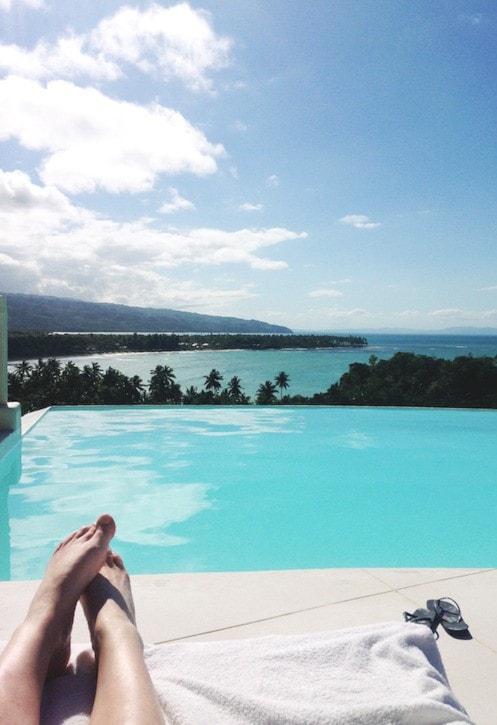Never one to shirk my responsibilities as a faithful Observer columnist, I thought — as I alluded in my last column — that I would write a comparison of island culture. I had visions of sharing my hands-on knowledge of what “it’s like here” versus my adopted home of Haida Gwaii.
But as I sit in this cliffside villa with a 180-degree view of the bay and mountains in the gorgeous enclave of Las Terrenas and research the fate of the first people of the Dominican, all I can think of is… my privilege.
I’m in no position to speak about here. Or on Haida Gwaii, for that matter. But the parallels and differences between the two island cultures and the similar stories of of colonialism are certainly worth sharing.
My talks with the locals were disjointed at best, having no Spanish at all. I asked Ileana, our host, what she loved about the Dominican and she said, “It’s cheap.” Then she said, “and everyone friendly!” pantomiming a large smile.
“Friendly and cheap,” I said, then realized what that sounded like! I realized, too, I wasn’t going to get much asking about the first peoples of the Dominican Republic. Even if she knew, it would likely be lost in translation (much like when Roeland told me the staff were coming to wash the windows tomorrow, and it took me 10 minutes to notice there isn’t a single pane of glass in this place!)
So I relied on what Google could provide. Some articles claim that the only complete genocide of a people occurred here in the Caribbean. Though blood lines may persist, intermingled with those of enslaved Africans, the culture and distinct people are completely gone.
The Arawak/Taino people lived on this island, which is now Haiti and the Dominican. They were a peaceful lot who practiced easy farming techniques and subsisted mostly from fish. As a result, they had a lot of time and — much like the Haida — intricate social systems. They practiced polygamy, with men having two or three wives. The cacique (what we would call a chief) could have up to 30 wives! They travelled great distances in canoes hollowed out from a single tree, spreading all around the Caribbean.
When Columbus arrived in 1492, some tried to work with him, and some tried to resist. Another people who lived in the area where I am now were cannibals. Called Caribs, they would raid the Arawak/Taino villages, kill the men, steal the women for breeding, and fatten up the children to eat! Understandably the cacique that ruled in this area tried to enlist the help of the Spanish to fend off this foe. It didn’t go well, for either the Arawak/Taino or the Caribs.
Much like home, smallpox devastated the first peoples here. Estimates vary, but 100,000 to 400,000 natives were here when Columbus arrived. The Spanish really settled the island by 1507, and by 1531 less than 600 natives survived. Caciques that angered the Spanish were regularly killed or imprisoned. Those who survived were put to work alongside enslaved Africans. The ability of the island to produce sugar cane and coffee meant the Spanish never left, and the culture of the Arawak/Taino never recovered.
It’s an all-too familiar story. And from my privileged position here on the cliffside, and at home, I’m left to marvel at the resiliency of the Haida people and how much has survived: dances, regalia, art, and spirituality. The Dominican, in contrast, is a very poor country. Today we were out fishing for tuna (didn’t catch any, but did catch some small flat fishes – Roeland and James doing it with their bare hands!), and on the way back our charter boat ran out of gas. Our guide had no phone, but luckily we did. Within 20 minutes another boat came to our rescue, but there was only one gas can between the two of us. It was transferred to our boat, and we towed our rescuers back to the shore. It’s a pragmatism we see on Haida Gwaii but generally, we have many more gas cans at our disposal.
We have only a day and a half left here at La Villa Loma Bonita. I will enjoy the view and the pool, and the protection afforded by my privilege – and by our security guard who is armed with a rifle and grenades. His name is Junior. He’s really quite a friendly fellow, as Ileana promised. Our next stop is New York City. I can’t wait to introduce our Tlellian children to the wonders of such a huge city. Any guesses as to how many Ewans stack up to the height of the Empire State Building? Stay tuned…
